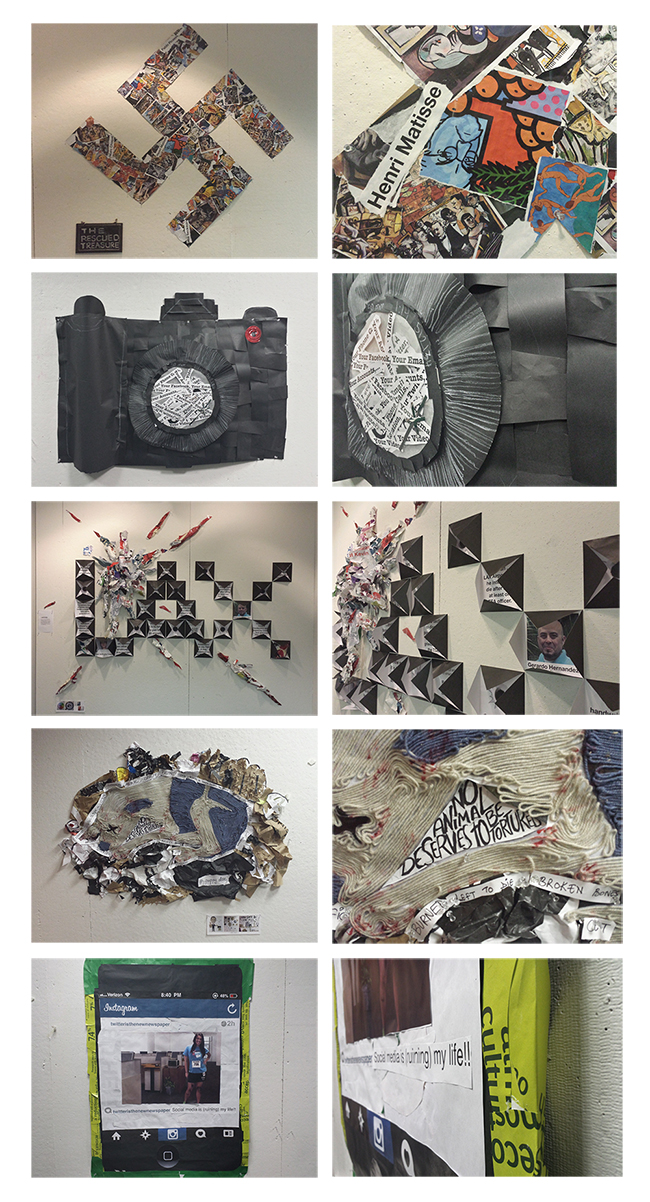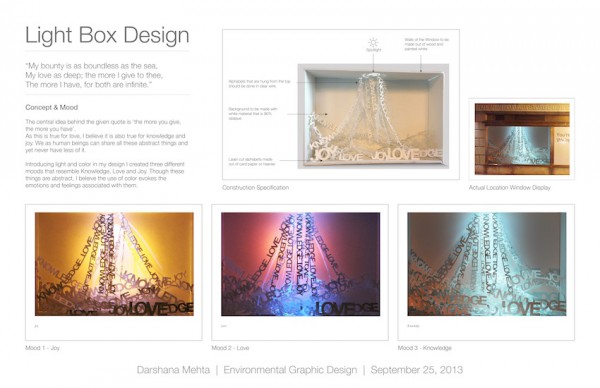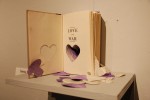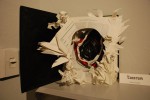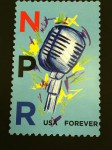Please introduce yourself
EB : My name is Elizabeth Bond and I am currently a second year graphic design master’s candidate at NESADSU.
MP: I am Mansi Patel, a master’s student at New England School of Art and Design of Suffolk University. I came here from India to pursue my higher education in Graphic Design field. I did my bachelor in Fashion Designing and diploma in Graphic Design before coming here. My interest in Advertise Design and Branding made me more anxious to have some more knowledge in Graphic Design field and that made me pursue master degree in this field.
Please tell us about your thesis topic! What is it about and what does inspire you?
EB : My overarching theme is on sustainability, but what I am most interested in is the lifestyle aspect to the topic, specifically as it relates to survival and the individual. This may sound confusing, but that is exactly why I am interested. There is something to be said for how an individuals’ lifestyle can negatively or positively impact the environment in a way that affects the future of society. Big change has to start somewhere and I believe that is with the individual making simple life changes. And to me that is inspiring.
MP : Since childhood I was fascinated about MIRRORS. I used to look at myself and play, sing, dance, talk. As I grew up, I wanted to have a girl sibling but the mirror was my true friend whenever I needed. I started acting and rehearsing in front of mirrors. This made me ask certain questions.: why do we learn from copying? Why is copy never exact the same as original? Why do we believe what we see? What if mirrors disappear from our life?
Can you explain about the thought process ?
EB : The thought process was incredibly scattered. I found myself spending a lot of time reading articles on sustainability that would spark in my interest in some small area of the topic, so I would then go and look into that, which would lead me somewhere else. It was a continual theme all throughout the research process. It was towards the end of the semester that I had to spend some time making sense of what I’d learned from my research in order to form logical analysis.
MP : When I started my thesis, I had a lot of questions and through research, I wanted to get answers of all my curiosity. I started investigating History and I cam to know about so many unknown things about mirrors. But I had to select a direction where I wanted to accelerate my thesis. I chose to go towards Human Mirroring. I wanted to explore the notion of mirroring. Gradually I divided that notion into 5 different sections: Symmetry, Empathy, Simulacrum, Authenticity and Absence. I wanted to elaborate these aspects with my main subject Mirroring.
Did someone help you through the process? and how?
EB : I had many advisors that helped me throughout the research phase, but it was my professor Minko Dimov and the support of my classmates that helped me reach the point I am at now. Without the discussions we had, I would not have struggled to pinpoint my focus and direction.
MP : Yes, My professors, Minko Dimov, Mish McIntyre and Eike Wintzer were with me from beginning till end. I used to discuss about my research every time I met them and they were giving me their inputs and suggestions where some more research was required. The Thesis process is very well designed that Students will know how to plan. Decision point 1, 2 and 3 also helped to distribute thesis and work according. I also talked with a professor who was about to held a photograph exhibit (Fortunately, almost of the same topic) and let him know what I am working on. I got a very good input for my thesis from him too. Other classes taken in same semester like Graphic Design Graduate Seminar also helped a lot to improve my presentation skills.
What was the biggest challenge?
EB : Going back to what I mentioned earlier about the thought process, I think the biggest challenge for me was organizing the so called “clutter” of research I had accumulated into a logical analysis.
MP : Mirrors are all over the world and humans use them to admire themselves. The biggest challenge I faced when I had to select any one aspect of mirrors for deep research. I got confused between all the categories I had researched. During DP1 I had shifted to “symmetry” and worked in that direction for DP2. But then I selected to stick to my previous topic and work on “Mirrors”. And I guess that was the best decision I took during research.
What have you learn after all of those research journey?
EB : One of the biggest challenges I had to overcome was my fear of not being able to answer every question someone had about my topic. There came a point I had to realized that I wouldn’t be an expert on sustainability by the end of a semester, people spend years researching this topic and there was no way that I could learn everything about it in just 16 weeks. So, I narrowed my focus and educated myself as much I could in specific areas of sustainability.
MP : I learned a lot after a long thesis research journey. Time management and presenting my topic to a panel. I also learned a lot regarding human behavior with mirroring and how copy has taken place in almost every aspect of human life. Human set an Idol image and throughout their life just struggle to achieve that picture. During this process they create so many copies which are not exact the same but have a unique identity in its own. Simulacrum was a new word ford for me which I explored during my research and now I am planning to proceed in that direction.
How do you prepare yourself when reaching thesis studio?
EB : I’ll be honest, I am not sure I am prepared for studio! I mean I am ready with the amount of research, but I’m still confused about how to approach the problem. However, I think that is the point. I’ve spent weeks researching this topic and now I have to critically analyze what I have learned in order to create an effective graphic design project. And even though I’m uncertain now, I realize that it’s just a part of the process.
MP : No exact preparation was done before reaching to thesis studio. I wanted to create something which can be helpful for humans. I never looked on the studio part during research. But I see that before reaching to studio you must have some idea about your thesis studio proposal. I did prepare myself for studio thinking I will be deciding my target group of audience and will design some product which will serve them for their betterment.
Do you have any suggestions for whom taking thesis research?
EB : Trust the process. It’s going to be difficult and frustrating and there will be many hurdles along the way, but it makes your work stronger.
MP : Just dig as deep as you can with research. Talk with other people around about your topic, “Though it does not make any sense to them :)”! Talk with different professors at NESAD and ask for their views. DO NOT get confused due to their different replies. At the end, you are your own teacher for thesis. You have all rights to decide what you should be doing to achieve what you are aiming. Start preparing your book in advance. Be confident while presenting your topic as confidence can change the result! Believe in your self.

